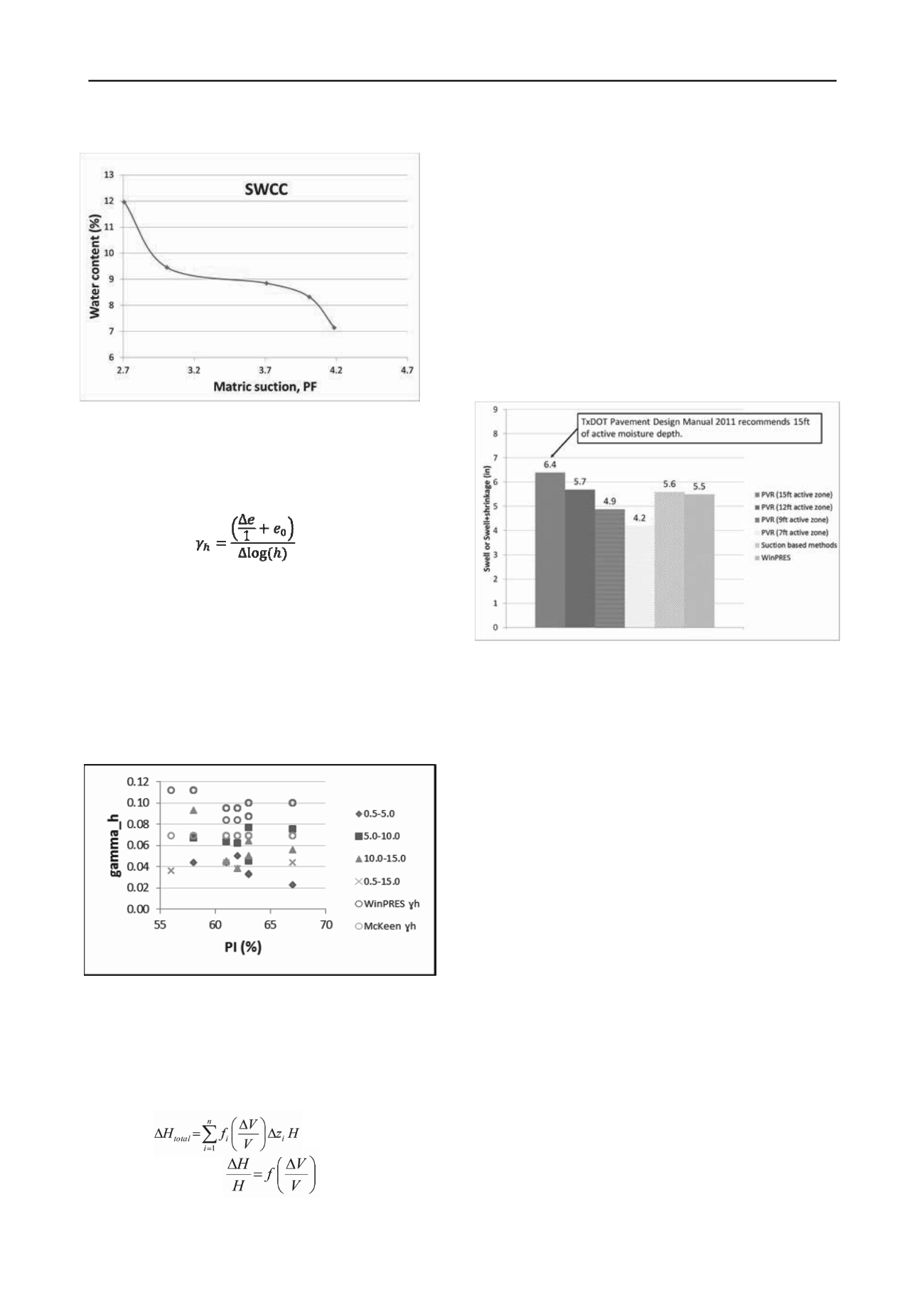
1360
Proceedings of the 18
th
International Conference on Soil Mechanics and Geotechnical Engineering, Paris 2013
6 CONCLUSIONS. COMPARISON OF THE SWELLING
DEFORMATION OF PVR WITH THE SUCTION BASED
METHODS
il water charac
The average suction compression index of the plate load
tests and the routine soil parameters were adopted to carry out a
comparison between the methods of estimating swelling
deformation (See Figure 11). The active moisture depth is the
depth below ground level where the shrinkage and swelling
movements of the soil are zero. The weather conditions and the
properties of the soil are the most important parameters that
determine the active moisture depth in a specific location.As it
is already known, the PVR method is very dependent of the
active moisture depth, which should be adopted based on the
local experience. In this example, different depths have been
adopted in the calculations.
Figure 9. Example of so
teristic curve from the SH-
following equation
proposed by tton (1977) can be applied.
d ratio
tio
= total suction
entioned
has been carried out for the samples of the test.
Figure 10. Com
ressure plate tests
al strain or movement, can be calculated from the
fol
l movement can be
cal lated from the following equation:
130 samples
.
The suction compression index (γ
h
) can then be determined
for agiven range of suction values. The
Ly
Where:
e = difference of voi
e
0
= initial void ra
h
The suction compression index (γ
h
) can also be estimated
based on routine soil testing as the Atterberg Limits, % passing
sieve #200 and % passing 2
m. In 2004, Lytton proposed
alternative charts that are implemented in the WinPRES
software. The comparison of the γ
h
calculated in the laboratory
and the values estimated from the two authors aforem
Figure 11. Comparison of vertical movements calculated with
different methods
The results showed that the relationships between one
dimensional swell and PI presented in the Tex-124-E can be
considered acceptable if the “dry” condition is adopted. Based
upon the calculations from soils obtained at South Austin, PVR
calculations with an active moisture depth of 12ft would result
in swelling values comparable to those calculated using suction
based methods.
7 REFERENCES
Hong, G. T., Bulut, R., Aubeny, C., Jayatiaka, R. and Lytton, R.
L. 2006 “
Design Model for Roughness and Serviceability of
Pavements on Expansive Soils
”, TRR No. 1967.
Litlle, D. 2012.
“Background for predicting roughness and/or
serviceability loss due to expansive soils”
, Internal
Memorandum.
parison of γh as calculated from p
Mitchell, P. W. 1979. “
Structural Analysis of Footings on
Expansive Soil
”, Research Report No. 1, Kenneth W. G. Smith
and Associates, Newton, South Australia.
vs. estimated from routine tests.
The vertic
lowing:
Finally the summation of vertica
Texas Department of Transportation 2011. “
Pavement Design
Guide
”.
cu


